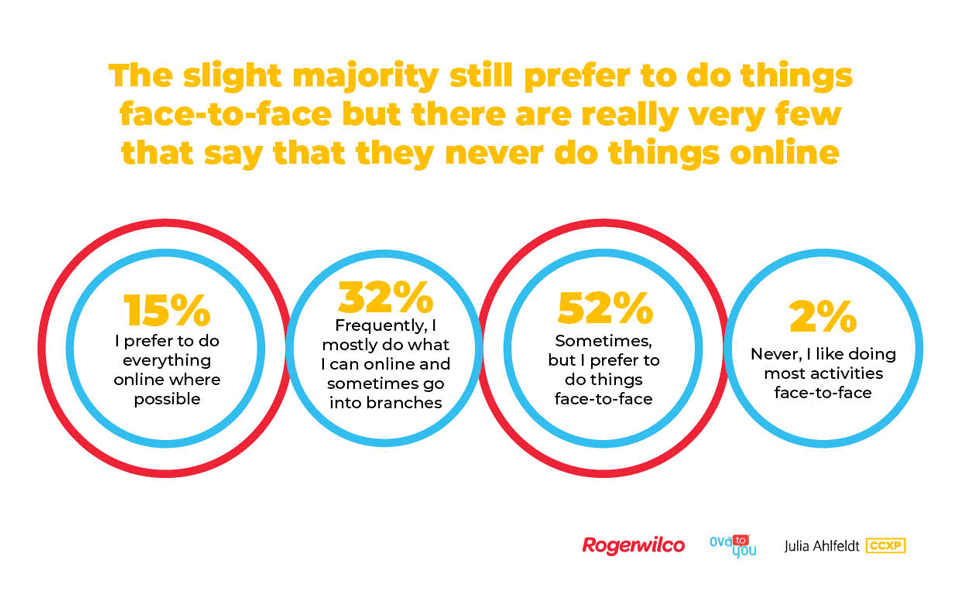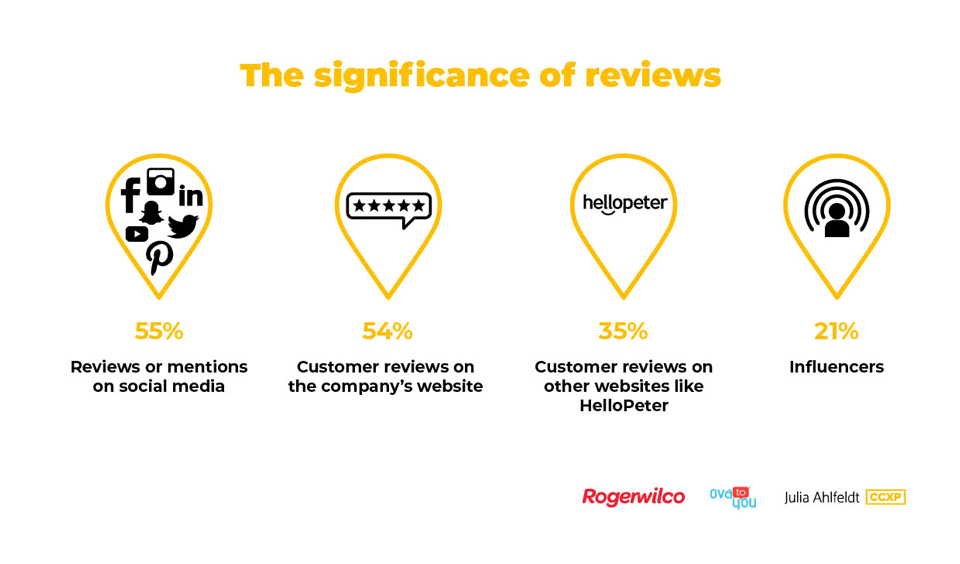R30bn left on the table by etailers with poor CX
South Africa’s ecommerce market has increased substantially since the start of the Covid-19 pandemic, but its potential to double by a further 100% to 5,6% of the total retail market is possible if etailers fix issues with their online CX. This is the key finding of the third annual South African Digital Customer Experience Report. CX refers to among other things, etailers’ trustworthiness, ease-of-use, security, delivery and after-sales support.
Collectively, these glitches are estimated to cost etailers R11,95bn in lost sales. Coupled with a R20,4bn loss thanks to frequent cart abandonment, the report reveals that over R30bn is being left on the table, which is coincidentally the same R-value as the current ecommerce sector. This is because - according to the Report, which is based on the annual ovatoyou study among 2000 online South Africans and commissioned by Rogerwilco, CX Professional Julia Ahlfeldt and ovatoyou’s Amanda Reekie – a staggering 96% of respondents said they would spend more online if etailers’ CX was better.

“The opportunity cost is pretty clear; consumers expect a higher level of experience from brands that they buy online from. This could in part be because they have become used to the CX of an Amazon or Takealot. These brands have set a high bar and local etailers need to up their online game if they are to convert the huge appetite among consumers for online shopping into Rands and cents,” says Charlie Stewart, CEO of Rogerwilco.
Online shopping has seen a sharp increase since the start of the pandemic and is one of the few sectors to find a silver lining. This has democratised its user base as the report reveals that a full 82% of respondents have made an online purchase, with 73% of those with a monthly household income of less than R10 000 per month shopping online. This entrance of a whole new cohort of shoppers, coupled with an increase in the number of categories people are buying from, takes online shopping out of the niche that it was, says Amanda Reekie.

Of significance, 32% said that they’ve increased the number of online stores that they buy from, 31% have made online shopping a part of their shopping routine while 20% report to be shopping more through social media.
“With improved levels of connectivity and an abundance of online shopping options, there’s no good reason why South Africa should lag behind other markets such as the US and UK. Customer experience is well and truly holding it back,” says CX Professional Julia Ahlfeldt.

So how can etailers capitalise on this online boom?
For starters they need to address issues of cart abandonment, given 76% said they failed to conclude their purchases (this is up from 71% in the 2019 report). Over half of those polled (51%) indicated that high shipping fees were to blame, with 32% noting lengthy delivery timelines were a deterrent. A further third complained that there were too many steps in the purchase process – brands would do well to emulate Amazon’s famous one-click checkout – with slow websites and a lack of support being cited as other reasons for cart abandonment. Payment issues – either a complete failure in the processing of the transaction (cited by 26%) or an issue with a discount code (20%) – continue to be significant impediments to closing the sale.
ovatoyou’s Reekie believes that given how expensive it is to get feet through the door, or rather eyes on the page, cart abandonment must come under the spotlight: “Retailers need to examine the functional and emotional reasons why shoppers are not completing their transactions.”

When sales are made, etailers need to complete the rest of the online experience offline, and it is here where some of the key moments of truth lie. These are points in the journey where the investment the customer has made – be it time, energy or money – comes to fruition. In fact, a third of respondents spoke to the delivery of their purchase in defining their experience and perception of the brand. Picup CEO, Antonio Bruni points to Amazon Prime as an example of an organisation getting it right. He says, “Businesses are not investing enough money into R&D and using technology to improve response times. Further, unwieldy infrastructure has prevented many traditional couriers from answering the demand for the rapid delivery that South African consumers expect and want.”
As important as the delivery of the purchase is, it was surpassed by the 34% who said unboxing their new purchase was the most memorable aspect of their online shopping experience. As a case in point, in recent years unboxing has become one of the most popular video categories on YouTube. “Unboxing is a huge missed opportunity for brands,” says Ahlfeldt. “Items haphazardly thrown into a delivery box doesn’t say ‘we appreciate our customers’.”

DHL’s Vice President Global Sales Programs, Marketing & Global ecommerce Leendert van Delft believes there is also a need for greater flexibility. “In today’s world, agendas can change quickly. People may work from home one day, but be in the office the next – flexibility in the delivery is crucial to tailor to those needs.”
Building and maintaining trust is another key focus area for online brands, and, while it is an intangible, it can make or break a sale. The research points to three factors that build trust. The first is the experience itself. Large stores like Amazon and Takealot have gotten this journey right. Stewart makes the point that good UX as displayed by these two industry behemoths, minimises frustration, reduces second guessing and stops customers switching across to a rival site. “Retailers need to recognise that consumers are becoming more loyal to the experience than they are to the brand.”

The second factor is brand resonance. With 32% of respondents claiming that they buy at familiar category and branded stores. Nike, Samsung and Apple were just a few of the names mentioned, as were Clicks and Superbalist. While peer reviews go a long way in establishing trust, customers are also more likely to purchase from a brand that they’ve seen advertise. This insight must not be lost on startups who must factor the cost of marketing and brand building in when preparing budgets for their online stores.
The third factor of trust is security: 12% of respondents said they wanted online stores to make a clear commitment to keeping their personal information private and secure while 11% expressed the need for a safe environment in which they could transact.

Delivering a slick online experience that’s secure and backed up by brand salience is the ultimate goal for all brands believes Sanlam Investments’ Ya’eesh Cader. “It’s a trinity of factors that build confidence no matter whether you’re buying groceries or making a long term financial investment. Attaining all three requires discipline and the ability to unify a variety of stakeholders across marketing and business.”
When it comes to making the all-important purchase a noteworthy 55% based their decisions on social media posts with 54% looking at reviews on the brand’s website. Third party review sites like HelloPeter are used by a further 35%. But of note, negative commentary would stop 64% in their tracks and result in a lost sale. Recommendations from family and friends are just as important as reviews (54%), followed closely by promotional information and brand advertising. 21% were persuaded by an influencer.

Should the purchase experience be positive, a full 78% said they’d share it with their friends and family (which is then responsible for 54% of purchase decisions), while 56% would post about great service on social media / online review sites. A similar number indicated they’d buy more from brands that please them. Conversely, a bad experience is also shared: 52% would tell family and friends and 45% would post on social media while a noteworthy 52% would never use the offending brand again. “We can truly say that customer experience is brand experience,” says Ahlfeldt.
In conclusion Stewart says, “South Africa is online. Whether they are shopping for groceries, buying wigs or making investment decisions, over the past 18 months we have witnessed a sharp uptick in consumers’ desire to engage with brands via their phones, televisions, watches, laptops and desktop PCs. While experiences have certainly improved since the first edition of this report, it’s clear that friction in the journey has a substantial opportunity cost of R30bn that’s impending online spending.”

- Rogerwilco sweeps 2025 Assegai Awards with 16 wins, including coveted Best in Class honour18 Nov 10:26
- Township shoppers go strategic: 2025 CX Report reveals shifting loyalties07 Oct 11:09
- 2025 township consumer trends: Price-conscious, local-first, social-driven30 Sep 08:41
- Rogerwilco launches echo: AI search that lets brands own their answers27 Aug 10:12
- The Township Marketing Podcast: Stories and strategies for marketing success in kasi commerce20 Aug 09:38















